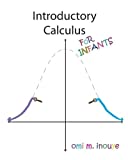Dividing Estate
I was teaching my students the Knaster method of dividing an estate, which I learned from my friend Ingrid Daubechies. Let’s look at an example.
Problem. Alice and Bob are divorcing. They have the portrait of Alice’s grandpa and $10,000. Alice values the portrait at $10,000 because of its sentimental value. Bob values it at a market price of $2,000. How do they divide their estate?
Here is what my students initially suggest.
- Give Alice the portrait, and give Bob all the cash.
- Give Alice the portrait, and divide the cash in half.
Let’s look at these suggestions in greater detail. Alice values the whole estate at $20,000; Bob values it at $12,000. In the first version, Alice gets half of the estate from her point of view; Bob gets the rest, which is more than half in his point of view. The students are obviously rooting for Bob. In the second version, Bob gets half of the estate in his estimate, while Alice gets the rest, which is more than half in her estimate. The students are obviously rooting for Alice. After some discussion, the students agree that there should be a number between $5,000 and $10,000 that Bob gets, which would be a fairer division than the two initial examples. But how do we find such a number?
This is where the Knaster algorithm comes in. The main idea is that each gets the same amount of money on top of their perceived half. In other words, the Knaster method treats the estate like a sealed-bid auction and equalizes bonuses. Alice thinks that her fair half is $10,000, while Bob thinks his half is $6,000. To equalize bonuses, we want Alice and Bob to each receive their perceived half plus the same amount — call it x. Solving gives x = $2,000. Alice gets the portrait and $2,000, while Bob gets $8,000.
This is a beautiful algorithm that allows each person to be very happy, receiving more than one half. The bigger the taste difference, the more each person gets on top of their portion. The next question is: how can people cheat if they know this algorithm is used?
Alice can cheat by claiming that she values the portrait at $2,000 plus epsilon. Epsilon is needed to guarantee she gets the portrait. This way, they both value the estate the same. Alice gets the portrait and $4,000, which is $2,000 more than the honest way. Symmetrically, Bob can cheat by claiming he values the portrait at $10,000 minus epsilon. This way, he gets $10,000, which is $2,000 more than the honest way.
I’ve been teaching this topic several times now. This year, my student Ben had an out-of-the-box idea on how Alice can cheat. Alice declares that she values the portrait at $0. Bob thinks the estate is worth $12,000, while Alice pretends that she values it at $10,000. After the calculation, Bob gets the portrait and $4,500, which is $500 more than his half of the estate in his view. Alice gets $5,500, which is $500 more than half of the estate in her declaration. Then she buys the portrait from Bob for $2,000. In the end, Alice gets the portrait and $3,500, way more than she would get after an honest use of the algorithm.
The first cheating method seems more profitable than the new one. But still, I love it when my students suggest unexpected ideas.
Share:





